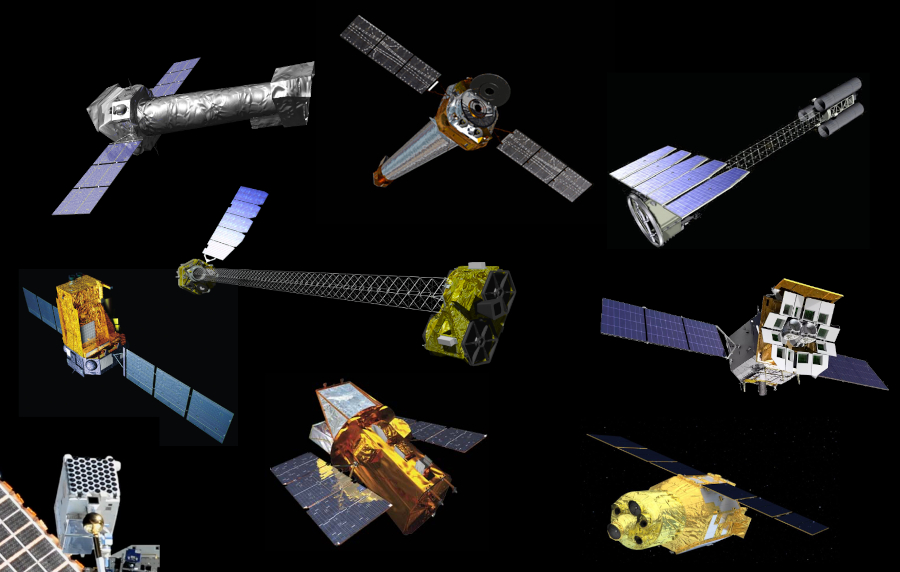
 Credit: NuSTAR; NASA/JAXA/ESA
Credit: NuSTAR; NASA/JAXA/ESA
International Agreement on High-Energy Truth
The characteristics of extreme high-energy X-ray sources in the Galaxy and beyond are measured by a fleet of complex, highly-capable X-ray satellite observatories in space. Space is the place for the study of X-ray emissions from the cosmos for the simple and fortunate reason that cosmic X-rays cannot penetrate through the earth's protective atmosphere. These missions have complementary capabilities to study X-ray sources like accreting black holes, highly magnetized neutron stars, massive clusters of galaxies, powerful supermassive black holes at the edge of the universe, active, flaring stars, and supernovae and gamma-ray burst afterglows, and other extreme objects. It's important of course that these high-energy space observatories are periodically cross-calibrated, one to another, so that measurements of the same object give the same fundamental properties (like intrinsic X-ray brightness or temperature). Since these observtories all have different orbits in space and see different parts of the sky at different times, and since X-ray emitters are usually variable, these periodic tests require carefully choreographed observations of a single, agreed-upon object to study the same object at nearly the same time. These contemporaneous tests are organized by the International Astronomical Consortium for High-Energy Calibration (IACHEC), a self-organized group of X-ray scientists from around the world. For each campaign, X-ray observatories are trained on the same, hopefully constant, X-ray source, and data are shared and analyzed by the scientists, and results compared. The most recent coordinated X-ray observing campaign occurred in early January, and nine X-ray observatories participated. The nine observatories, shown above, from left to right and top to bottom are: XMM-Newton, Chandra, IXPE; INTEGRAL, NuSTAR, Einstein Probe; NICER, Swift, and XRISM. This is the largest number of observatories ever to participate in a single organized cross-calibration observation.
Published: January 27, 2025
<
HEA Dictionary ● Archive
● Search HEAPOW
● Other Languages
● HEAPOW on Facebook
● Download all Images
● Education ● HEAD
>
Each week the HEASARC
brings you new, exciting and beautiful images from X-ray and Gamma ray
astronomy. Check back each week and be sure to check out the HEAPOW archive!
Page Author: Dr. Michael F. Corcoran
Last modified Monday, 03-Feb-2025 12:57:22 EST


